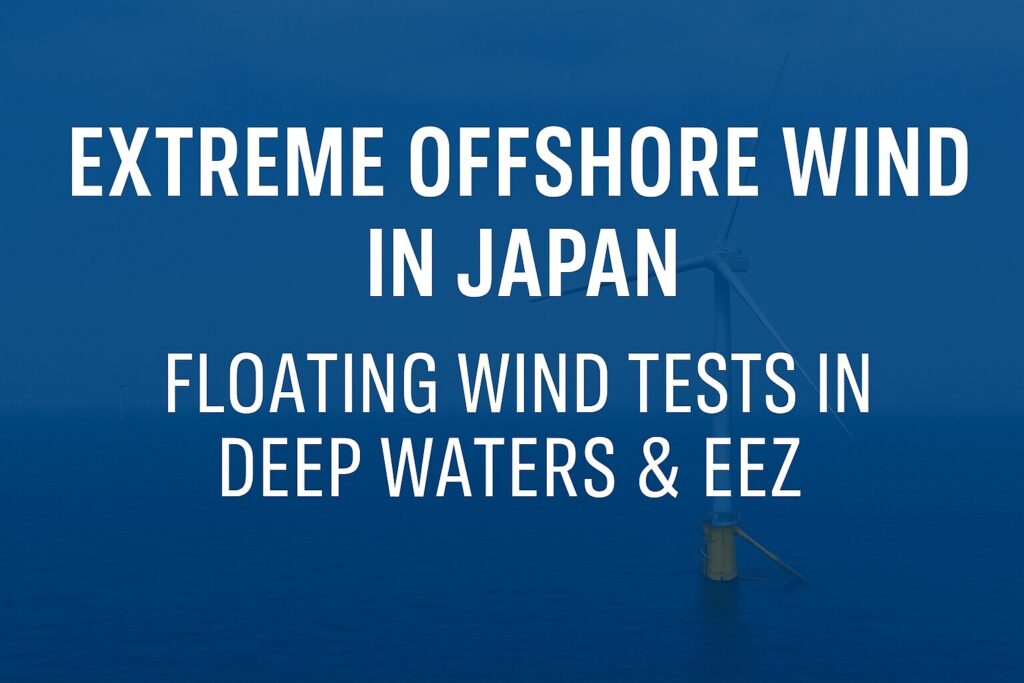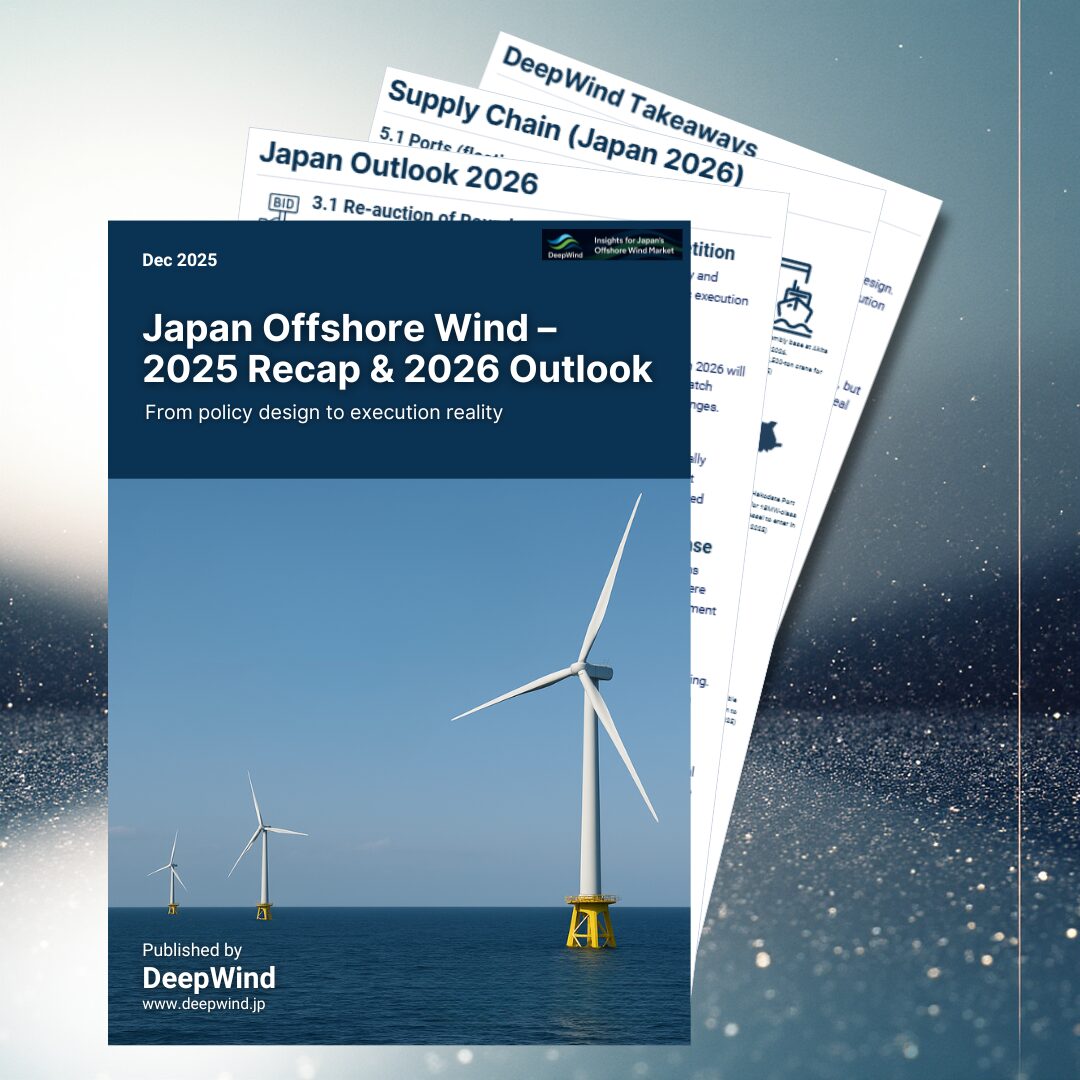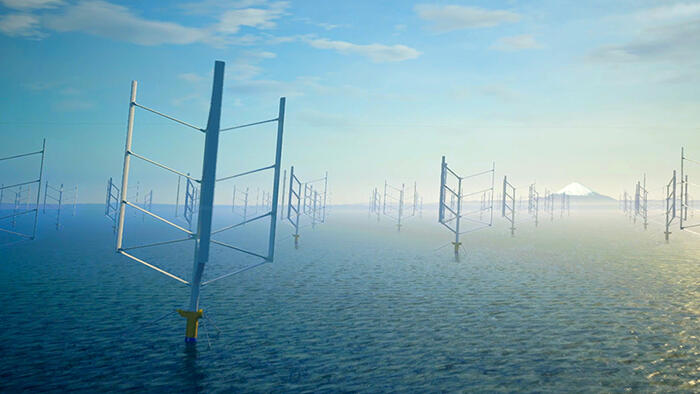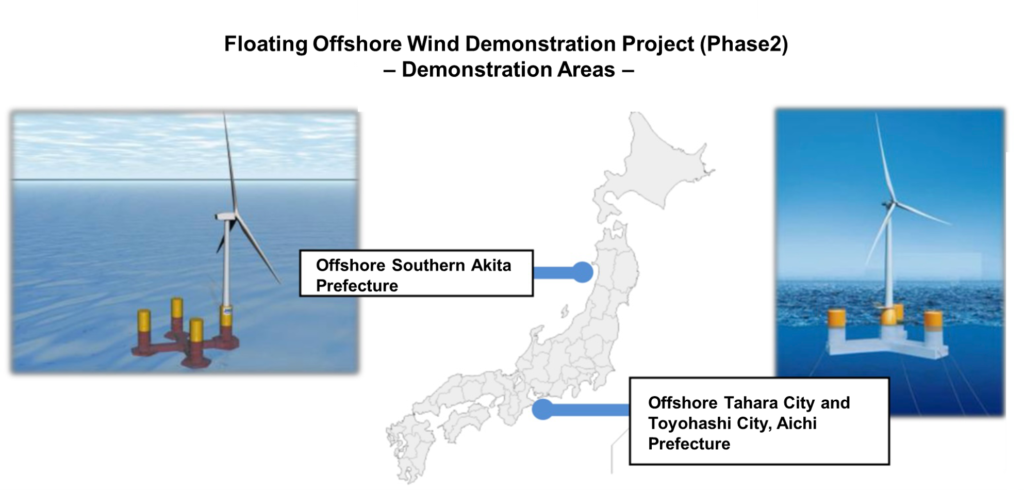Introduction
The Japanese government is embarking on a new phase of floating offshore wind power demonstration in “deep-water and extreme marine environments” aiming to accelerate commercialization and enhance international competitiveness.
In July 2025, the Agency for Natural Resources and Energy unveiled a new policy outlining plans to advance technology development and demonstration in unprecedented conditions worldwide—water depths of 500 to 1,000 meters, strong winds, high waves, steep seabed slopes, and rocky seabeds—targeting deployment in the Exclusive Economic Zone (EEZ) and the broader Asian market. This article examines the background, demonstration plans, and potential for international expansion.
Reference: METI public document
This article takes a deep dive into this specific topic, but if you’re looking for a comprehensive overview of offshore wind technologies, check out our full summary article here:
👉 Offshore Wind Technology 2025: Foundations, Floating Wind, Turbines, and Innovations
1. Background and Purpose
Japan aims to develop 30–45 GW of offshore wind capacity by 2040. Following the June 2025 amendment to the EEZ Act, installation beyond territorial waters is now permitted. The Asian market is projected to become the world’s largest by 2050, making it urgent to establish technologies that can operate under conditions unlike those of existing demonstration projects.
2. Conditions and Features of Extreme Marine Demonstrations
| Condition | Overview |
|---|---|
| Water Depth | Over 500 m (up to 1,000 m anticipated) |
| Wind Conditions | Strong winds approaching an average speed of 10 m/s |
| Wave Height | Significant wave height exceeding 1.5 m, increasing installation difficulty |
| Seabed Topography | Steep slopes of over 10 degrees, rocky seabeds |
| Geology | Requires special foundations such as pile anchors |
3. Key Technical Verification Areas
- Improving installation efficiency and optimizing O&M in high-wave and strong-wind conditions
- Evaluating wave and motion impacts on floating system design
- Designing and constructing anchors for steep slopes and rocky seabeds
- Developing deep-water dynamic cables and power transmission systems
4. Priority Development for Deep-Water Technologies (FLOWRA)
The Floating Offshore Wind Research Association (FLOWRA), established through collaboration among domestic power generation companies, is advancing the development of mooring and anchoring systems, installation methods, O&M practices, and transmission technologies for deep-water environments. Key themes include redundancy and weight reduction in mooring system design, optimization of shared anchors, and design of 500–1,000 m-capable dynamic cables and floating substations.
5. International Expansion and Ripple Effects
Technology exports to Asian countries such as South Korea, Taiwan, and Australia are in view. Compared to European demonstration sites (Norway’s METCenter, UK’s EMEC), Japan is expected to hold a first-mover advantage under deep-water conditions. This is anticipated to enable Japan to lead in international standardization, accelerate domestic companies’ overseas market entry, and strengthen the national supply chain.
5-1. Key Conditions of Major European Demonstration Sites
| Site Name | Water Depth [m] | Wind Speed [m/s] | Significant Wave Height [m] |
|---|---|---|---|
| EMEC (UK) | 80–95 | 10.7 | 2.3 |
| METCenter (Norway) | 20–200 | 9.7 | 12.9 |
| Planned Sites in Japan | 500–1,000 | ~10 | 1.5 + |
Conclusion
Floating offshore wind demonstrations in extreme marine environments will be pivotal for utilizing Japan’s EEZ and developing the Asian market. By taking the lead in this field, Japan is expected to strengthen its international competitiveness, develop its supply chain, and establish leadership in both domestic and global markets.
For a broader look at offshore wind technologies and future innovations, make sure to explore our comprehensive summary article:
🌊 Offshore Wind Technology 2025: Foundations, Floating Wind, Turbines, and Innovations
Explore more categories at DeepWind:
- 🔍Market Insights – Understand the latest trends and key topics in Japan’s offshore wind market
- 🏛️Policy & Regulations – Explore Japan’s legal frameworks, auction systems, and designated promotion zones.
- 🌊Projects – Get an overview of offshore wind projects across Japan’s coastal regions.
- 🛠️Technology & Innovation – Discover the latest technologies and innovations shaping Japan’s offshore wind sector.
- 💡Cost Analysis – Dive into Japan-specific LCOE insights and offshore wind cost structures.



